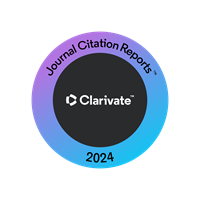<b>The impact of management on the physical and hydrological attributes of a darkred latosol under <em>cerrado</em> in Selviria, State of Mato Grosso do Sul</b> - DOI: 10.4025/actasciagron.v28i1.1284
Abstract
This research work studied the influence of notillage, conventional tillage and four ground cover plants on the saturated hydraulic conductivity, infiltration, retention, storage of water and matric potential in a DARKRED LATOSOL under cerrado, cultivated with maize. The study was conducted at Unesp of Ilha Solteira, State of São Paulo. A completely randomized design was used with subdivided parcels (randomized block design), with five treatments and four repetitions. The parcels were constituted of the following ground cover plants: Mucuna aterrima, Pennisetum americanum, Crotalaria juncea, Cajanus cajan and an area of spontaneous vegetation. As for the parcels subdivisions, the systems of soil management implemented were notillage (NT) and conventional tillage (CT). In the layers of 0.00.10 and 0.100.20 m, for tensions between 6 and 100 kPa, the CT system made the soil achieve greater water storage. Although CT (0 – 0.20 m) presented greater water storage compared to the NT, the same was less efficient in making the stored water available to the plants. The NT presented greater uniformity of water distribution in the profile of the soil.Downloads
Download data is not yet available.
Published
2008-04-04
How to Cite
Silva, M. M. da, Alves, M. C., Sousa, A. de P., & Fernandes, F. C. S. (2008). <b>The impact of management on the physical and hydrological attributes of a darkred latosol under <em>cerrado</em> in Selviria, State of Mato Grosso do Sul</b> - DOI: 10.4025/actasciagron.v28i1.1284. Acta Scientiarum. Agronomy, 28(1), 13-22. https://doi.org/10.4025/actasciagron.v28i1.1284
Issue
Section
Soils
DECLARATION OF ORIGINALITY AND COPYRIGHTS
I Declare that current article is original and has not been submitted for publication, in part or in whole, to any other national or international journal.
The copyrights belong exclusively to the authors. Published content is licensed under Creative Commons Attribution 4.0 (CC BY 4.0) guidelines, which allows sharing (copy and distribution of the material in any medium or format) and adaptation (remix, transform, and build upon the material) for any purpose, even commercially, under the terms of attribution.
2.0
2019CiteScore
60th percentile
Powered by 

2.0
2019CiteScore
60th percentile
Powered by 



















































